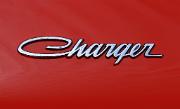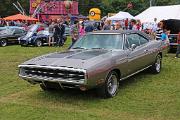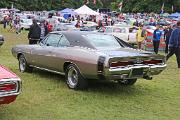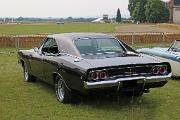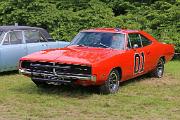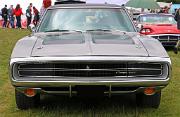
ac Dodge Charger 500 1970 head
Dodge Charger 500 1970. The 1970 Charger 500 had the option of the Magnum 440 Six Pack fitted with three two-barrel carburetors and rated at 390bhp.
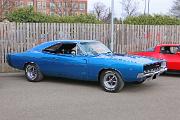
Dodge Charger 1968 R-T 440 side
Dodge Charger 1968 R/T 440. Along the the R/T (Road/Track) package came the 440 Magnum (7,200cc) 375bhp V8 engine. The 'Bumble Bee' stripes on the tail were part of the R/T package, but could be deleted.
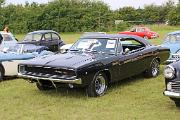
Dodge Charger 1968 R-T frontb
Dodge Charger 1968 R/T. For 1968 Chrysler gave all its B-body cars a new design. To differentiate the Charger from Dodge Coronets, Richard Sias designed the 'double diamond' waistline and gave the Charger dual scallops on the doors. Harvey J. Winn did the front and back, giving in hidden headlamps.
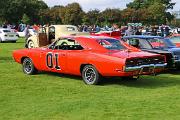
Dodge Charger 1969 rear
Dodge Charger 1969. Although based on the B-body Dodge Coronet, the Dodge Charger had its own unique double coke bottle waist, with flying buttresses of the rear window by Richard Sias and Harvey J. Winn.
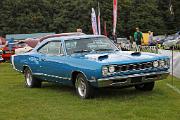
Dodge Coronet 383 Magnum 1968 front
Click here to go to an album on: Dodge Coronet 1968. Dodge Coronet 383 Magnum 1968. The 'Magnum' version of the Coronet had a 383 cu in (6.3-litre V8) engine, but there were higher performance versions including the R/T models and the Super Bee models.
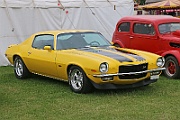
Chevrolet Camaro 1970 Z28 front
Chevrolet Camaro 1970 Z28. Offered for the first time, the Z-28 was a performance package for the Camaro using the LT-1 5.7-litre V8 engine from the Corvette, with 4-barrel carbs and 360bhp (350 after 1971)
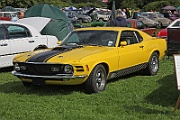
Ford Mustang 1970 Mach 1 351 front
Ford Mustang Mach 1 351 1970. Ford introduced the Mach 1 for the 1969 model year based only on the 'sportsroof' (fastback) body. A 351 cu.in 5.8-litre Windsor V8 powered the Mach 1, although other engines were optional. Sales of 72,000 Mach 1s saw the GT model (5,400) pulled in favour of the Mach 1 for 1970. The 1970 Mach 1 got a 5.8-litre Cleveland 351 cu.in. V8 in 2-barrel or 4-barrel tune. When the Mustang II was launched in 1974 a Mach 1 edition was also offered.
